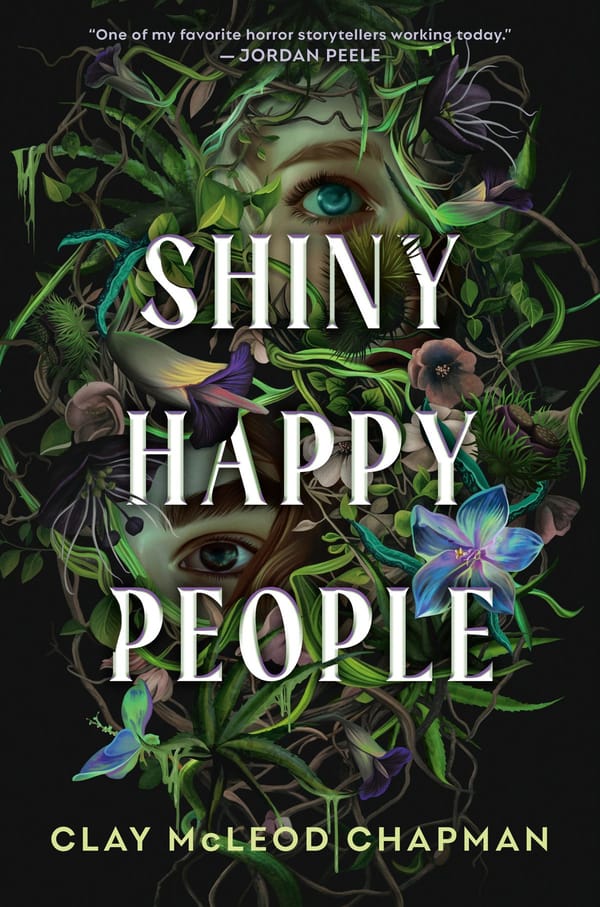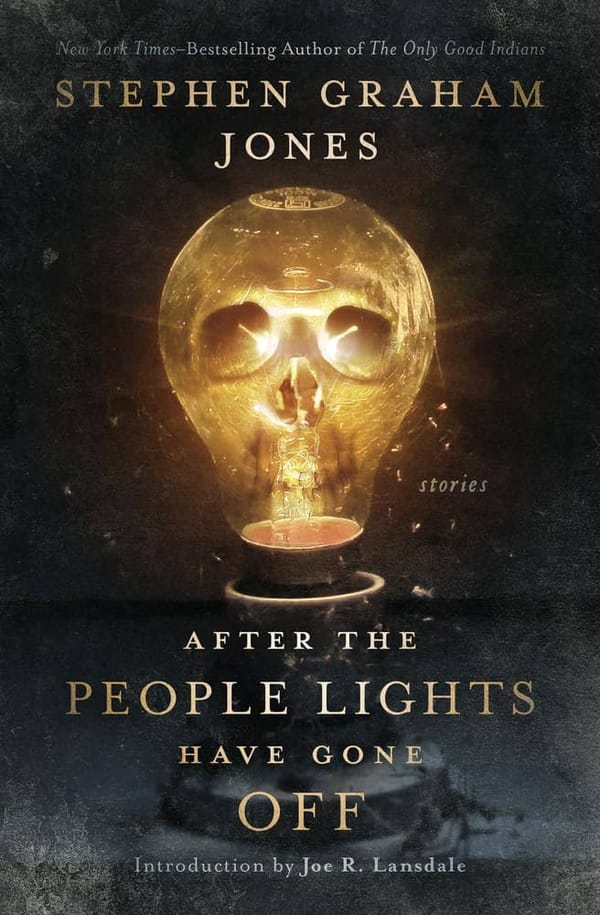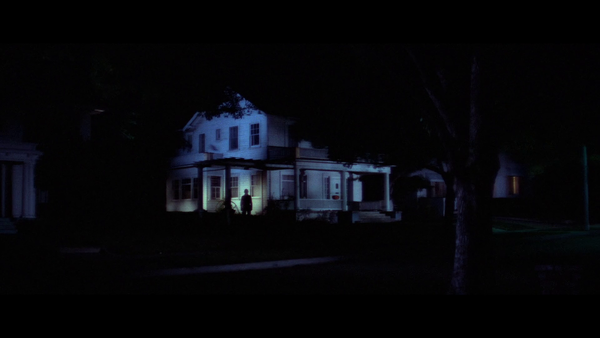Tracing The Shape 6: One Good Scare, or Art History for Slasher Fans
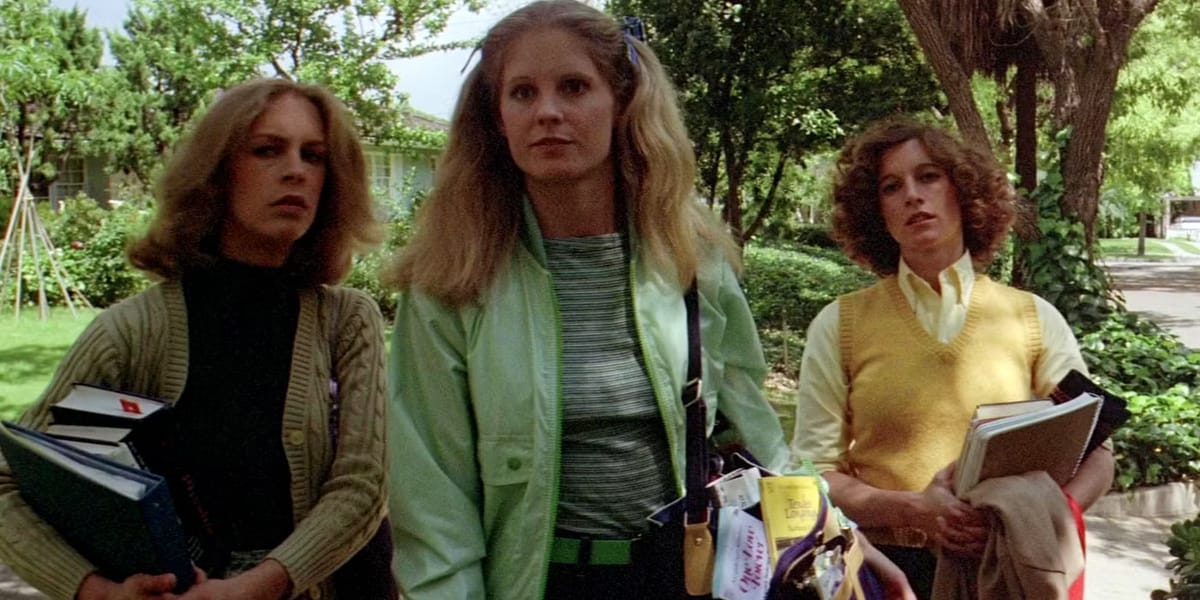
Halloween gives me something new every time I watch it.
That's not an exaggeration. I have seen this movie at least once a year for at least the last 23 years, and there are still details worth mining, worth expanding. This time around, for instance, I noticed something that feels especially interesting in the context of the chunk of film I'm spotlighting for this essay.
No one ever really comments on Michael wearing a mask.
We're in the daylight hours now, and Michael is emboldened to move about in the world, continuing his pursuit of Laurie Strode, the girl who showed up at his doorstep on this Halloween morning. Laurie's already seen him once, outside her classroom window, but he was quite a distance away, so maybe she just didn't clock the mask.
The next time she sees him, while walking with her best friends Annie and Lynda down a quiet residential street, he's in a darkened car, so maybe no one notices. That next time, though? When he's peering out from behind a bush? She had to know that wasn't a human face, right? And by the time he's outside her bedroom window, in amongst the laundry, she definitely knows. And yet it never comes up, not even when she sees Annie's father, Sheriff Leigh Brackett, outside the Brackett family home. For a moment you can tell she wants to say something, tell the Sheriff that she suspects someone's following her, and she might even want to talk about the mask. But she doesn't.
This is Haddonfield. Why would anyone really want to do that?
We're in Michael's world now, as we discussed last time when I tried to unpack the impact of Michael's first venture out on the town. He feels comfortable enough to move freely, to pursue his target and gather information about where she lives, what she's doing, who she's with. We'll see this in virtually every scene from now until the sun goes down. The Boogeyman's spell is at work, so Michael can go where he pleases, teleport across distances with barely a thought.
And yet for Laurie, Annie, and Lynda, it's just another afternoon. Almost.
Annie and Lynda don't get much in the way of an arc in this film, and yet they're two of my favorite characters in all of horror, because they serve this story so well. Annie Brackett in particular is one of the best supporting players in any slasher, in part because of the writing and in part because Nancy Loomis just knows how to be the cop's kid, the girl who probably grew up around men trying to watch out for her, telling her to watch out for their sons, always picking at her with their off-color jokes. There's a toughness to Annie that's hard-won, and coupled with a biting sense of humor, it's easy to see how she and Laurie complement each other, and why they share a closer bond than either of them seems to have with Lynda. She's the hardness to Laurie's softness, the wit to match Laurie's intelligence, possibly the one person on Earth, other than Michael Myers, capable of (lovingly) yanking Laurie up out of her comfort zone.
Then there's P.J. Soles, who slips into Lynda Van Der Klok like she's pulling on her favorite jeans. She's so effortlessly bubbly, so great at playing the girl who could give a shit about school and grades and books, that you almost don't notice the tenderness in her portrayal. She cares about her friends, as she proves when (turn your volume up) she backtracks on a joke she makes at Laurie's expense right at the beginning of the scene. You get the sense that she's a deeply loving, if a bit aloof and unserious, young woman, and maybe she gets along with Laurie and Annie not just because they're patient with her, but also because they know who she really is, and they'll stick up for her if she's accused of being a dumb blonde.
Together this trinity of young souls, all looking ahead to a future that'll either never happen or be permanently marred by what's about to happen, makes for one of the most relatable character dynamics I've ever seen in a teen-driven horror film. Because each of them has something one of the others does not, they get to take turns feeling like the Weird One, the inadequate one, the one who isn't good enough, and then they can hold each other up in those moments. We see it most with Laurie because she's the main character, but there's a sense that it's happened with all of them. It enriches the movie, in these few minutes we get to spend with the three girls together, more than I can adequately say, because I spent all of my high school career feeling like I was that kid.
The clear bond between these girls, and the fun they have ribbing each other, creates a translucent bubble around them, ornamented by Haddonfield's ivy-wrapped trees and well-manicured lawns. It's a bubble strong enough to keep The Boogeyman out, or at least to keep fear of him at bay, but not for long. Mere minutes pass from the time Laurie leaves school to the time she lies down on her bed in her bedroom, and in those minutes we see Michael three times: once in the car, once on the street, and once in the backyard. In each instance, we get the sense that he's testing not just himself, but these girls. He gets a strong reaction from Annie, which he'll pay back later, and Lynda just thinks he might be a cute boy from school. No one talks about the mask, and Annie even concludes that one Michael sighting wasn't even real. The dark magic of The Boogeyman is working, obscuring details, warping perception.
For everyone, that is, except Laurie.
Annie and Lynda are just walking home, looking ahead to a Halloween night when they'll hopefully get some action, maybe some beer. Laurie, with her wealth of interiority, senses that something is off. Her morning walk was bright and breezy and free of menace, but she's seen The Boogeyman now, so that can't happen again. Not when you notice as much, process as much information as this girl.
Everything about Laurie's walk home, her encounter with Sheriff Brackett, and the following scene in her bedroom, is meant to throw her, and by extension us, off balance. The score, the way the wind seems to pick up when Michael's around, and of course the awful dramatic irony that comes from watching Lynda and Annie ignore something that will kill them, all work together to make something that's just staggeringly tense, even upon rewatches.
And yet the mask is never mentioned. Because it's Halloween? Because everyone's entitled to one good scare, as Sheriff Brackett reminds us, so why would a mask be all that strange?
On the wall in Laurie's room, there's a poster for an exhibition by James Ensor, a Belgian artist who worked in the late 19th and early 20th century as a post-Impressionist and a proto-Expressionist. I'd never looked him up before this essay, but here, for your viewing pleasure, is his most famous painting, Christ's Entry Into Brussels in 1889. Look carefully at the faces in the bottom half of the canvas.
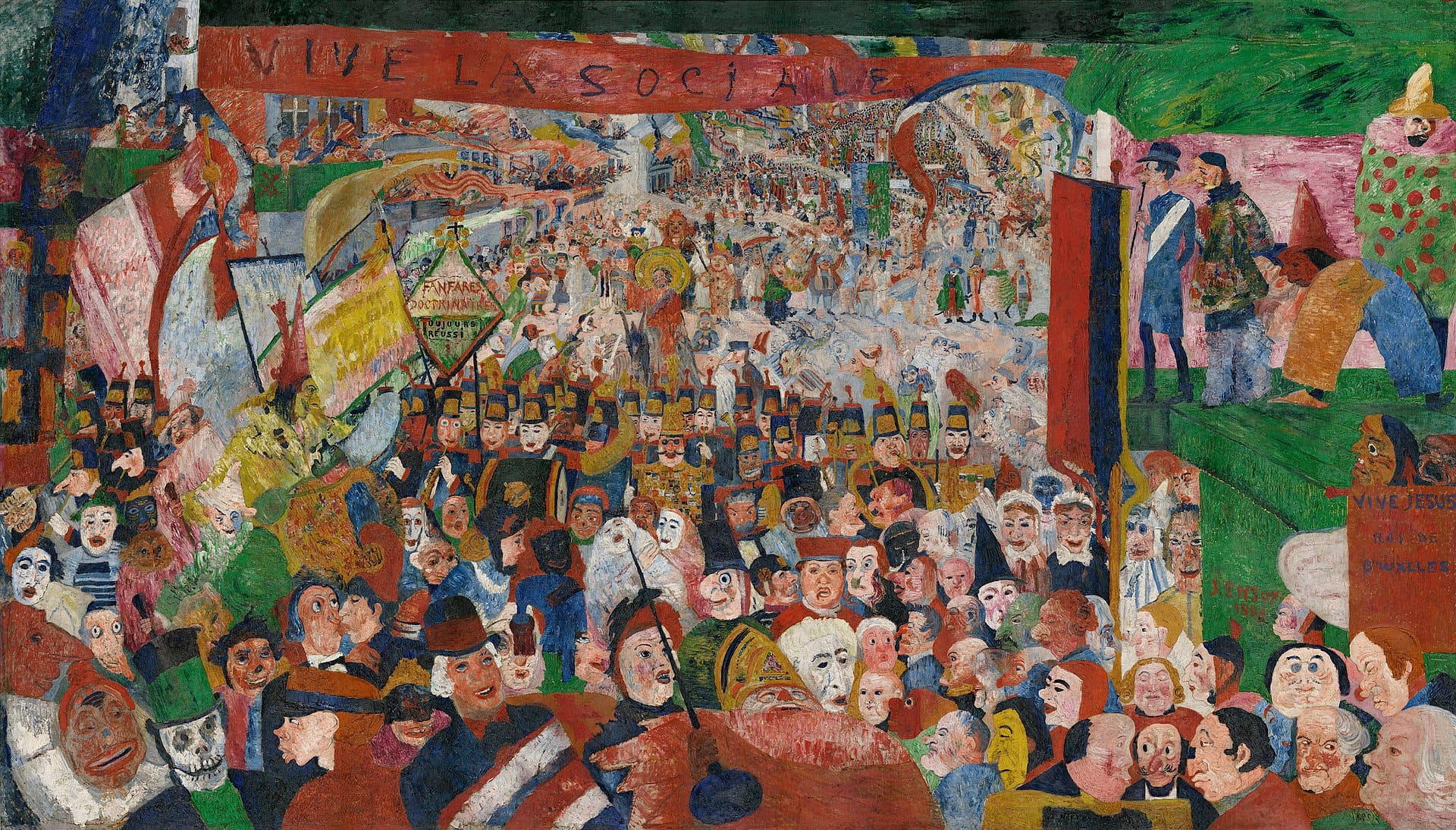
Look at all of those masks. And it's not the only Ensor composition to play with this motif. Did John Carpenter and Debra Hill hang that poster there on purpose, hoping people would catch the reference? Have art historians been making this point about Halloween for 40 years? Don't know, but here's what this knowledge did for me:
Ensor's masks are often pale, hollow-eyed shades, just like Michael Myers' mask, but they do not stand out in crowds. If anything they're sometimes overshadowed by the other masks and vivid grotesques in Ensor's colorful compositions, often packed from border to border with fascinating visages. They are part of the same strange landscape, as natural and necessary to the images as the paint itself.
Laurie Strode, Annie Brackett, and Lynda Van Der Klok are strong characters and, in the case of Annie and Lynda, bolded archetypes. They are striking, and relatable, and so we want to follow them. They project all of their youthful energy and yearning out into the world around them, brightening it, but they cannot outshine the shadow that is Michael Myers. Like a James Ensor grotesque, he is as permanent as the landscape now. He's begun to blend, to absorb back into his hometown, wiping away his features to hide behind coveralls and that pale face. You don't see him unless you're really looking.
And Laurie Strode is the only one of her friends who's starting to see something.
Next: Evening in Haddonfield!
